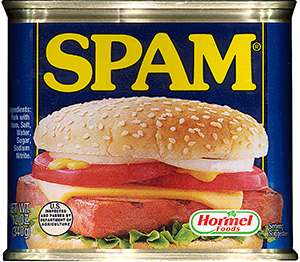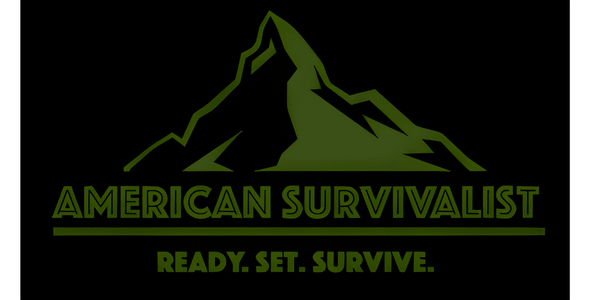
Pemmican vs. Spam. Which is the best food for survival?
Share
Meat – rich in protein, fats, iron, energy and other essential nutrients – is a useful and tasty addition to your survival food reserves. The problem is it’s also highly perishable. Without refrigeration, fresh meat will stay safe to eat for a matter of days at most. If you freeze it you can store it for up to a couple of years, but are you going to be able to keep things frozen after the SHTF? That’s not something I personally would want to rely on. What’s needed is some kind of meat that can be stored for months or years without refrigeration.
People have been figuring out ways to store meat for centuries, and there are a lot of different solutions out there. Sailing ships carried barrels of salt beef and pork; some of the earliest canned goods were whole roast chickens. Many forms of storable meat have been developed, although some of them haven’t been much fun to eat (sailors used to carve small ornaments from especially hard chunks of salt beef).
Preppers have an obvious interest in meat that can be stored, and there are a few items that tend to be popular. Some are commercial products; others are home made. Both have plenty of fans among preppers, and there are two that really stand out – Spam and pemmican. You’ll find plenty of opinions on prepper sites, with dedicated fans of both, but which is really better as a survival food? First let’s look at their history and what they actually are.
Spam

Spam was introduced by the Hormel Foods Corporation in 1937, and people are still arguing about what the name means. Spiced ham? Spare meat? Specially processed American meat? In any case the aim was to boost sales of pork shoulder, which wasn’t a popular cut. Hormel hoped they could create a tastier, more versatile product that would let them sell something people weren’t buying otherwise.
What they actually came up with was a meat product that could be prepared in many ways, eaten cold if necessary, and stored for years without refrigeration. In fact when it first went on sale it was the only canned meat product that didn’t need to be refrigerated. The recipe was simple enough, though. Chopped pork shoulder was mixed with chopped ham, salt, sugar and potato starch, along with some sodium nitrite as a preservative and to keep the meat pink. The mixture was canned and sealed, then cooked in the cans to produce a block of long-lasting meat.
Spam’s long shelf life made it invaluable when World War II broke out. Thousands of tons of Spam were shipped across the Atlantic to Britain; from there, much of it went on the dreaded Arctic convoys to Murmansk. Nikita Kruschchev, a Soviet Army officer who fought at Stalingrad, once said “ Without Spam we wouldn’t have been able to feed our army,” while Margaret Thatcher paid tribute to its part in the wartime British diet.
Hormel have now been making Spam for more than 80 years; the eight billionth can was sold in 2012.
Related: How To Make Spam
Pemmican

Pemmican, on the other hand, has a much longer history. Native Americans were making it for centuries – nobody’s really sure how long – before Europeans discovered North America, and it wasn’t just a traditional part of their diet; for many tribes, it was vital if they were going to survive the winter.
Native American hunters were experts at killing bison, deer and other large animals, so as long as game was available they weren’t short of meat. What they did lack was the technology to preserve it, so they came up with a low-tech but ingenious way of making it last. The meat was dried over a fire or in the sun, then pounded into a powder and mixed with rendered fat; sometimes dried, crushed berries were added to the mix. The result was a compact but nutritious food that, packed into rawhide bags, could stay edible as long as ten years. Large sacks of pemmican would keep a tribe fed through the winter; smaller balls of it made easily portable, nutritious food for hunters and warriors.
When European hunters, trappers and explorers discovered pemmican they immediately borrowed the idea, and either traded it from the Indians or made it themselves. Pemmican went on to be taken on polar expeditions, used as a survival food by legendary tracker Frederick Burnham’s scouts in South Africa, and even used as the main component of British Army emergency rations in the Boer War.
Today, many preppers make their own pemmican and swear by it as the ultimate long-life food. But is it really better than spam? Time to compare them.
Shelf Life
If you plan to store something for emergencies you need to know that it’s going to be edible when you need it. We all worry about getting food poisoning from something that’s picked up a crop of bacteria along the way, but food can also lose a lot of its nutritional value when it deteriorates. It often loses texture and flavor, too. How well do Spam and pemmican survive in your stockpile?
Hormel say that Spam has an indefinite storage life, but every can comes with a best before date printed on the end. Unless the can is punctured or swollen it should still be safe to eat after this date, but it might not taste as good. If you store it in a cool dry place it should be good for at least ten years, though – and maybe a lot longer.
Pemmican doesn’t have any artificial preservatives, but the drying process gets rid of the moisture that bacteria need to grow, and rendering the fat helps stop it going rancid. Most modern pemmican recipes say it will last for a few months in the freezer, but the truth is it will stay good for years. Vacuum-pack it in mylar bags and it can survive ten years or more. So, on shelf life, it’s pretty much a draw.
Versatility
Avoiding monotony matters with survival food. If you’re going to be living off your cache for weeks or months, you don’t want to face every meal with a groan of “Not pemmican and rice again!” Food that can be cooked in a variety of ways is always good.
Pemmican is pretty versatile. It can be eaten with no preparation, although it’s pretty fatty and bland. Even the old trappers and hunters avoided eating it that way unless they were on the move. Instead they fried it in a pan (it provides its own fat), with potatoes and onions if they were available. Other times they made a stew of pemmican and any vegetables they could get their hands on.
If it’s versatility you want, though, Spam is hard to beat. You can do just about anything with Spam. It can be eaten straight out the tin in an emergency, or sliced and put in a sandwich. Diced, it works well in stews and stir fries. Slice it thin and fry it in its own fat as a pretty good bacon substitute, or serve thicker fried slices as part of a main meal. In Hawaii they even serve Spam musubi, giant sushi with a slice of fried – you guessed it – Spam on top. So for the sheer variety of meals you can cook with it, Spam’s the winner here.
Availability
Stockpiling food is easy now, with the stores full of it. What about later, though? If the crisis lasts more than one winter you’re going to need to have your stocks rebuilt by the next fall, or you’ll be in trouble pretty quickly. Can you restock your preserved meat?
With Spam the answer is probably going to be no. Yes, there are millions of cans of it sitting around in grocery stores and warehouses, but they won’t sit there long when the SHTF. A lot of hungry people are going to be looking for food, and they’ll make short work of the nation’s Spam reserves. What’s on your shelf is all you get.
Pemmican is a different story. Need more pemmican? Get your rifle out, shoot some deer and make more pemmican. Drying the meat takes some time, but if you know how to make it you can preserve all the meat you can get your hands on. Even if it’s Spam that gets you through your first post-civilization winter, you’ll be eating pemmican when the second one hits. So for availability, I’ll take pemmican every time.
Cost
The ultimate survival food isn’t a lot of use if you can only afford enough to last a week. How do long-life meats stack up on price?
Spam often gets sneered at as a cheap meat option. In fact two 12oz cans of it will set you back $5.28 in Walmart. That’s pretty cheap compared to premium steak, but start putting up enough to last you for three months and it’s going to get expensive in a hurry.
If you’re buying that premium steak to make pemmican it won’t be cheap either – especially as it takes five pounds of fresh meat to make one pound that’s dry enough to be used. Then again, why use premium steak? You can use the cheapest cuts you can find. But where pemmican really comes into its own is that you can make it from meat you’ve hunted or raised yourself. So overall, pemmican wins on cost.
Nutrition
The whole point of food is to keep you alive. If it isn’t nutritious, it probably shouldn’t be in your stockpile.
Spam is a dietician’s worst nightmare. A hunk of meat, covered in fat and liberally laced with sugar and salt? How nutritious can that be? Well, you might be surprised. Spam is 33% protein, and packed with energy. It’s a good source of fat, which is vital in a survival situation. The sodium content isn’t a bad thing either, because if you’re working hard you’ll be sweating out a lot of essential salts.
On the other hand pemmican, especially if it’s made the traditional way with dried berries mixed in, is almost a nutritionally complete food. Plain pemmican is short on carbohydrates and Vitamin C, but the berries help with that. You can live on nothing but pemmican for a long time (although you’ll get pretty sick of it). Pemmican is the clear winner on nutrition.
Related: How to Make Bannock the Survival Food Rich in Vitamin C
The Verdict
So overall, Spam and pemmican are both great options for your food stockpile – but if it’s one or the other, pemmican is better. It lasts as long, it’s more nutritious, you can replenish your stores from meat you harvest yourself, and it’s a better source of nutrients. I certainly have more than a few cans of Spam stashed away, but the core of my meat supply is the old Plains Indians survival food.


